This article evaluates the main characteristics of four professional watercolor pencil brands. Initially, my plan…
Watercolour or Inktense — Derwent watercolor pencils comparison
When it comes to investing in art materials, many doubts arise related to brands and product lines, and with colored pencils, it’s no different. In this comparative review, I want to help you choose the best option between two excellent lines of watercolor pencils from Derwent, a brand specializing in this material and providing excellent options over the years.

Derwent is a traditional brand in colored pencils and already has so many lines with specific characteristics that it’s easy for us to get lost with so many options (which I consider extremely positive). Until the date of this article, they have three lines of watercolor pencils. One is Graphitint – tinted and water-soluble graphite pencils. The other two are the ones we will see below, Watercolour and Inktense.
Previously, I did a comparative review of four brands of watercolor pencils, in which I tested Inktense. At that time, I didn’t know about Watercolour. When I became aware of this other line, I was very curious to understand its differences — and I discovered that they are quite important. Let’s dive in, shall we?
Watercolour, Watercolor in Pencil Form
The idea behind Watercolour is a subtle result, with soft and watercolor-like colors. With a very soft core, it can be used for large coverings as well as details. Like traditional watercolors, after drying, the painting can still be modified using water.
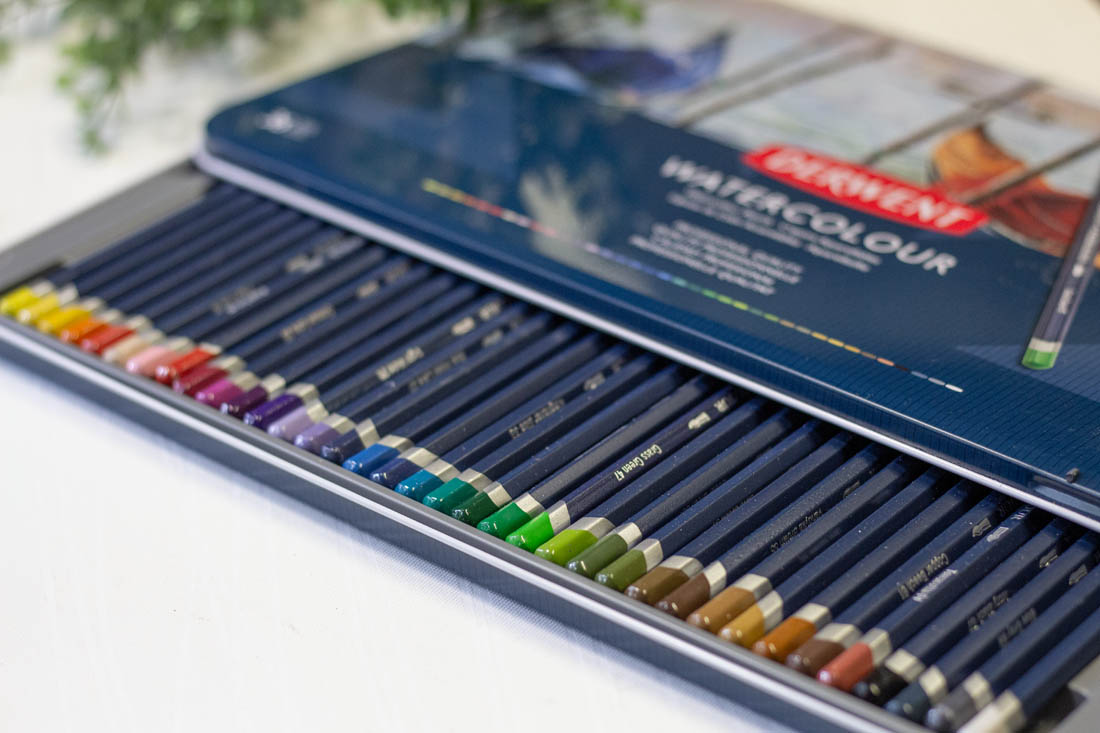
For the best possible comparison, I chose the same subject and completed two studies. This first one using only Watercolour. Combining wet and dry techniques, I achieved a result that pleased me a lot:
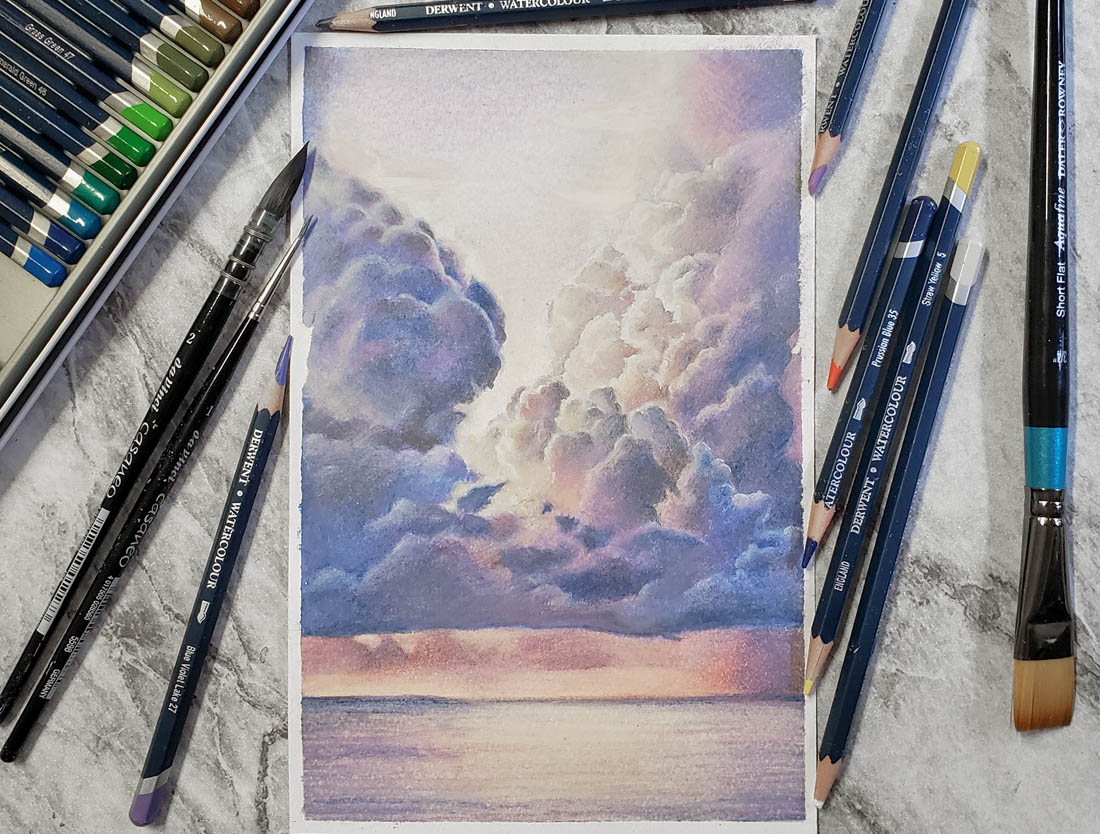
Watercolour Summary:
- Total number of colors: 72
- Body: hexagonal
- Water-soluble: yes
- Core: 3.5 mm / soft / wax-based
- Ease of color blending: ★★★★☆
- Color intensity: ★★☆☆☆
- Layer acceptance: ★★★★☆
- Point Firmness: ★★★☆☆
- Ease of erasing: ★★★☆☆
- Lightfastness: ★★★★☆ — 80% of colors
- Availability: individually and in sets of 12, 24, 36, 48, and 72 colors
Inktense, Permanent Watercolor Pencils
In contrast to the smoothness proposed by Watercolour, Inktense lives up to its name, with truly intense and vibrant colors. Its cores have ink pigments in their formulation, so when mixed with water, they produce even more intense colors than their dry strokes.
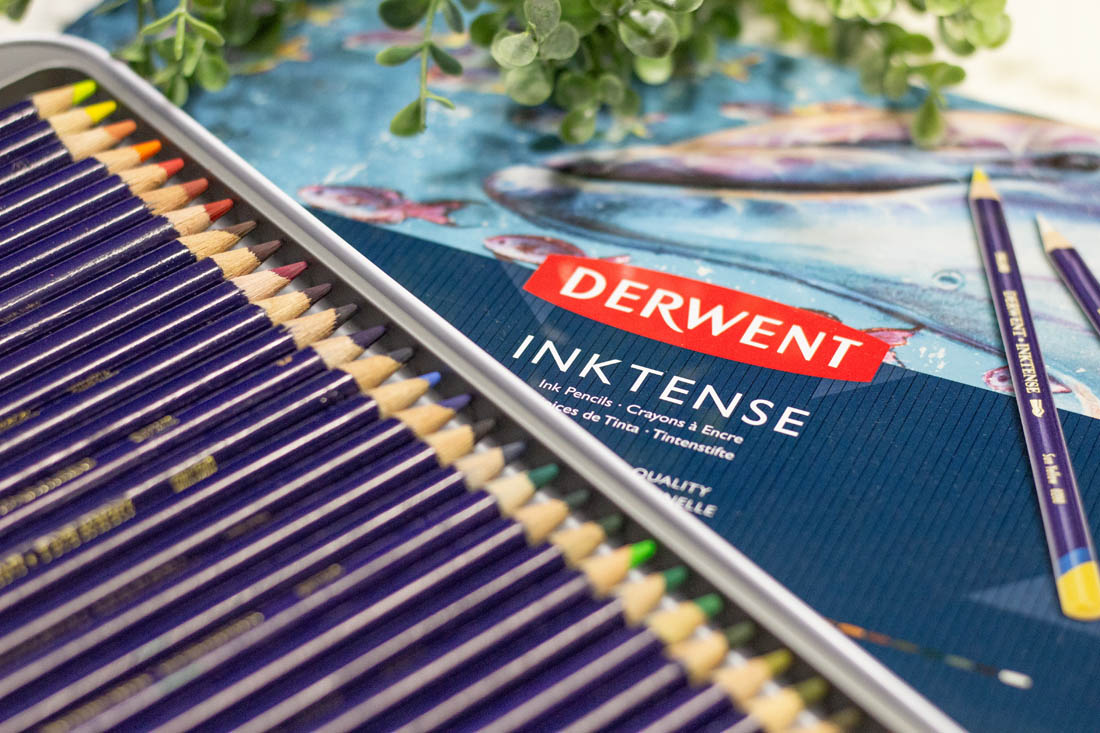
When completely dissolved in water, once dry, its pigments become permanent. Therefore, new layers of wash can be applied without altering the first part of the painting. Another feature of Inktense is its ability to be used on fabrics. I confess I haven’t tested this yet, but I believe it deserves an article entirely dedicated to the subject, what do you think?
The core is firm and creamy, which can make the paper texture very evident in the painting. Due to its core texture, it accepts many layers in dry technique, some more than Watercolour. However, it’s challenging to maintain a fine point for painting details. For this reason, all Inktense palettes from 24 colors onwards come with an outliner, a hard lead graphite pencil that can be used both for outlining before watercoloring and refining details at the end of the painting.
In my cloud study using only Inktense, I had some surprises. One of them was a fantastic color transformation, which wasn’t exactly the expected result, but it ended up being beautiful. This reinforces an important note that we always make about colored materials: a color chart is fundamental. With it, we can plan and achieve a precise result without surprises.

The result of this study was really far from my goal, which was something more realistic and much less colorful. I believe this makes it clear that the proposal of vibrant colors is fulfilled.

Inktense Summary:
- Total number of colors: 71 (+ outliner)
- Body: round
- Water-soluble: yes, permanent after drying
- Core: 4 mm / firm / wax-based
- Ease of color blending: ★★★☆☆
- Color intensity: ★★★★★
- Layer acceptance: ★★★★★
- Point Firmness: ★★★★☆
- Ease of erasing: ☆☆☆☆☆
- Lightfastness: ★★★★☆ — 87% of colors
- Availability: individually and in sets of 12, 24, 36, 48, and 72 colors
Inktense vs. Watercolour
Next, let’s compare both in the main forms of application. This way, it will be clear which one is ideal for your taste and working style.
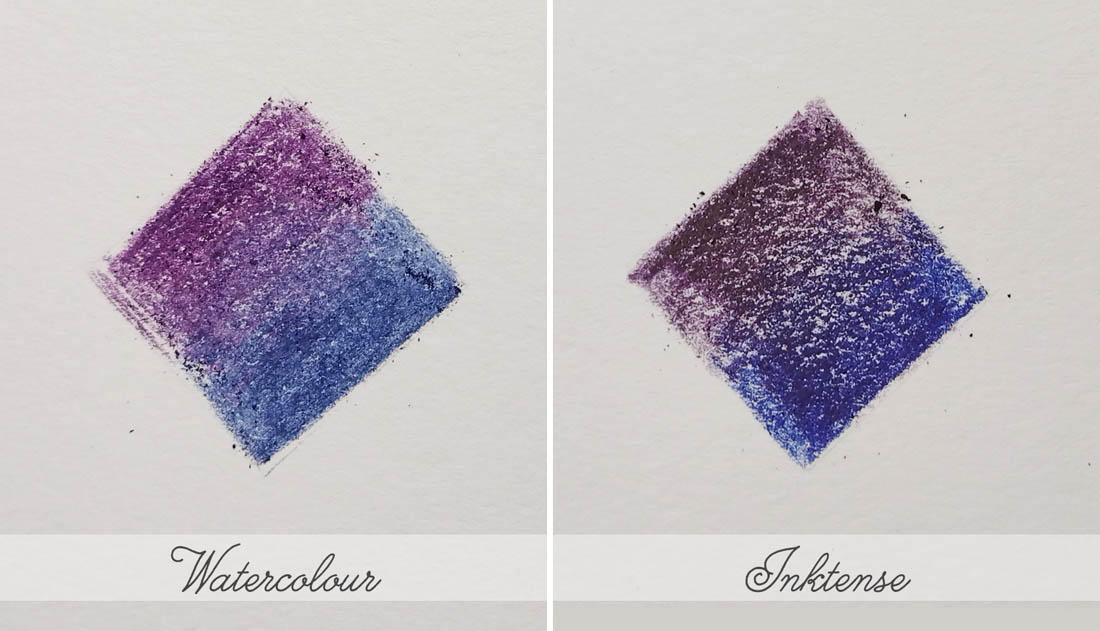
For the test, I tried to use similar colors from both lines. Above, strokes were applied with medium to high pressure to test the “maximum” color of each line in a maximum of two layers. Below are the same strokes with the application of the wash. Note how Watercolour reacts more predictably, while Inktense transforms into an intense, vibrant pigment, even in greater quantity than it seemed to have been applied.
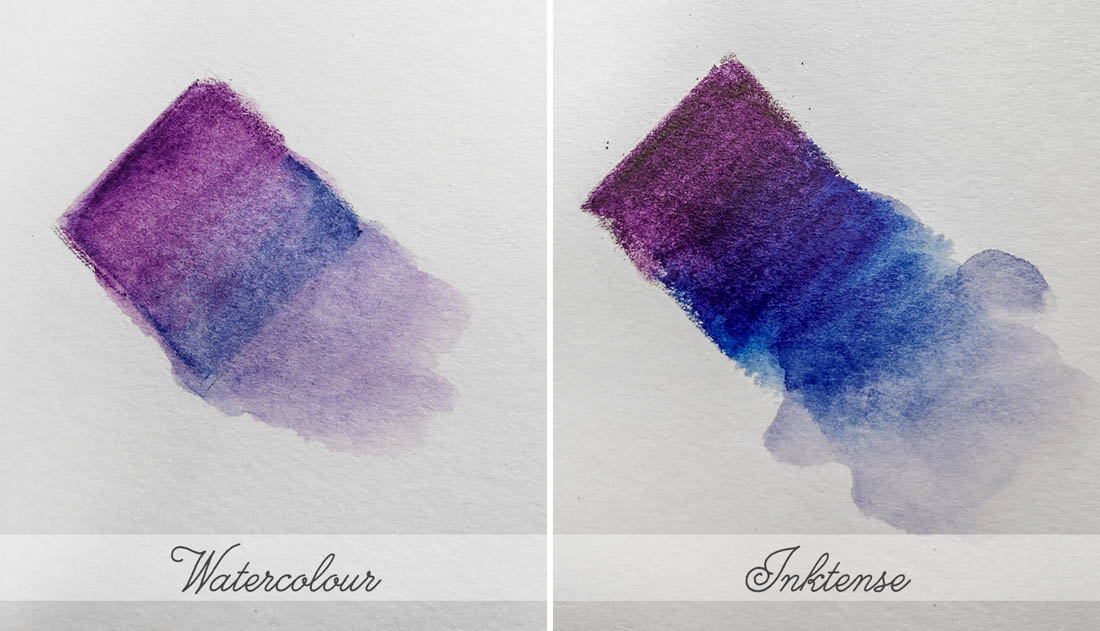
Below, an experiment with strokes and an attempt to dissolve them completely. Both react similarly, but Inktense required less work with the brush for the stroke to dissolve in this way.
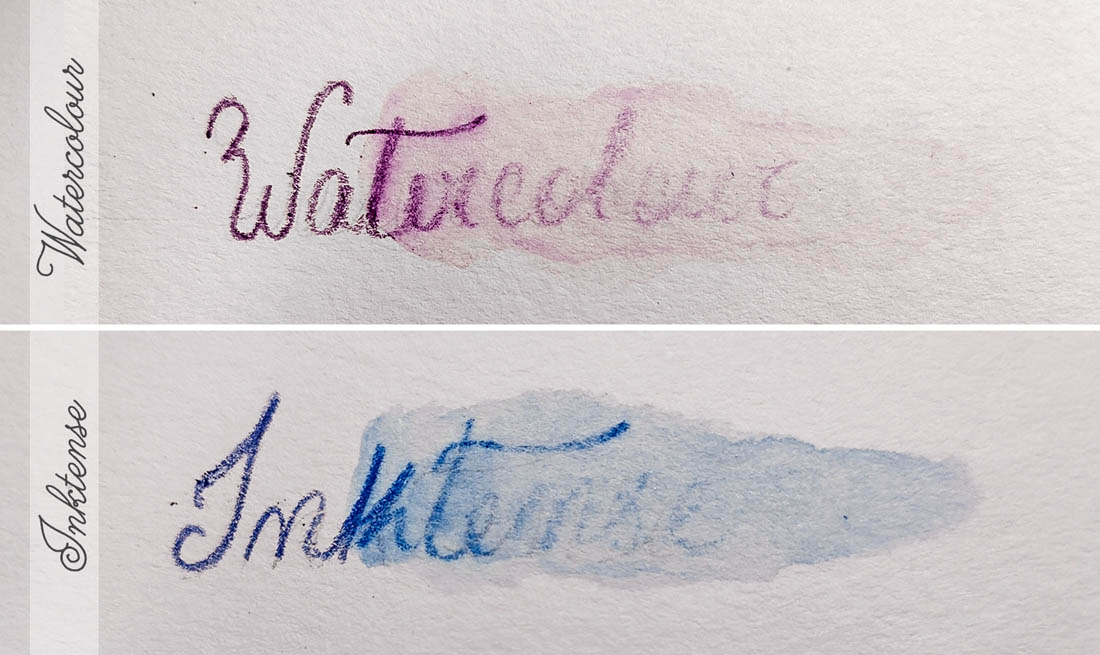
I hope this article was useful! If you have any suggestions of colored pencil / watercolor supplies that would like me to review, please feel free to reach out! Don’t forget to subscribe for future updates.
Best,
Emmy
Source for this article: Derwent
